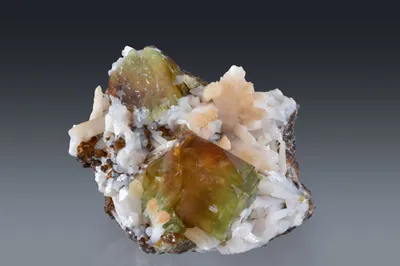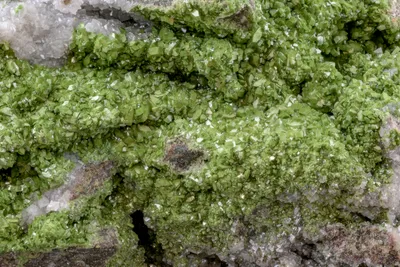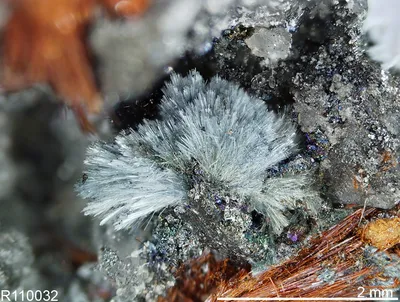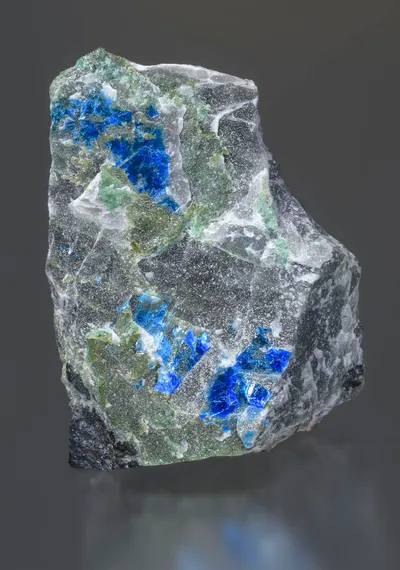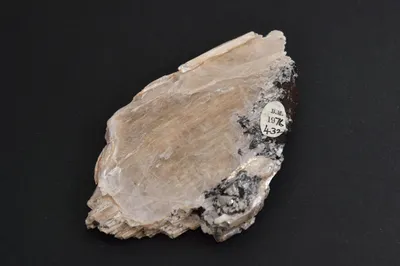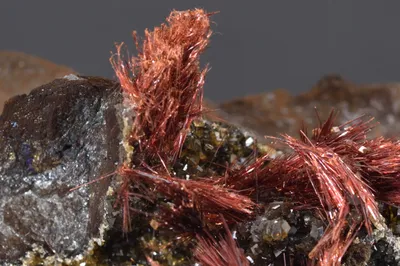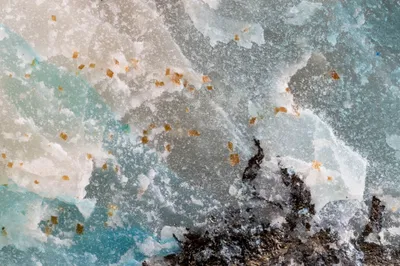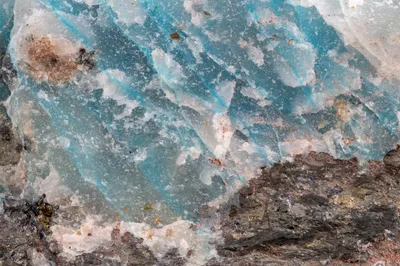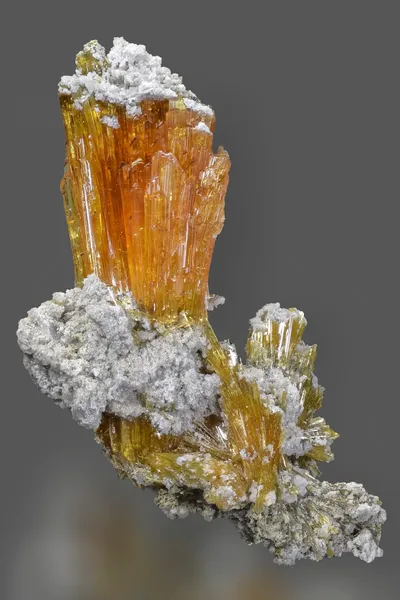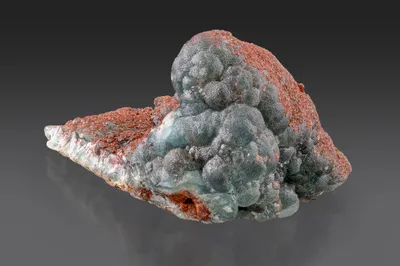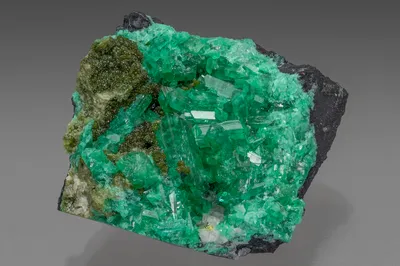Mineral Species
Koritnigite
Type Locality
Yes
Composition
Zn(AsO3OH)·H2O
Crystal System
Triclinic
Status at Tsumeb
Confirmed (type locality)
Abundance
Extremely rare
Distribution
Second and third oxidation zones
Paragenesis
Supergene
Entry Number
Species; TSNB195
Type Mineralogy
An unknown zinc arsenate resembling gypsum was discovered in material from the East 9 Pillar on 31 Level in the second oxidation zone at Tsumeb in the mid-1970s. Koritnigite, IMA 1978-008, is named for German mineralogist Professor Sigmund Koritnig (Keller et al. 1979d); the crystal structure was resolved by Keller et al. (1980). The holotype specimen is conserved at the Institut für Mineralogie und Kristallchemie, Universität Stuttgart, Germany (Paul Keller Collection; catalogue numbers TM-78.78-8701.13; NM02); co-type material is held at the Smithsonian Institution in Washington D.C. (catalogue number 143369).
General Notes
The type specimen of koritnigite is from the East 9 Pillar, 31 Level in Tsumeb’s second oxidation zone where it occurs in vuggy tennantite ore. It is usually colourless to white but very rarely rose-pink (Keller and Bartelke 1982). Von Bezing et al. (2016) attribute the rare pink colouration to the presence of manganese. Cleavage is perfect on {010} with cleavage traces parallel to [010] and [100]; the lustre is sub-vitreous but pearly on the {001} cleavage. Koritnigite is readily confused with gypsum (with which it shares a similar hardness), also with schultenite and claudetite which, unfortunately, all occur in the same paragenesis (Keller and Bartelke 1982).
Keller and Bartelke (1982) considered koritnigite to be "… a fairly abundant mineral" but noted that euhedral crystals are extremely rare.
The type assemblage (Keller et al. 1979d) comprises koritnigite in cavities in tennantite, with cuprian adamite (=zincolivenite), stranskiite, lavendulan, köttigite, prosperite, and o'danielite. Koritnigite is part of a complex paragenetic sequence "II/4" proposed by Keller and Bartelke (1982; page 145 – Table 1).
Gebhard (1999) noted that koritnigite, visually resembling gypsum, was found filling veins in chalcocite ore, also on 31 Level.
Gebhard (1999) also reported that in the third oxidation zone koritnigite was found as "sugar-like, white crusts" on specimens with the incompletely described minerals "GS1" and "GS2" of Gebhard (1999).
Blas et al. (2009) reported tufted aggregates of colourless needle-like koritnigite crystals, the ends of which are partly replaced by leiteite. It should be noted that these partial pseudomorphs occur on a minute scale; the tufts of partly altered koritnigite are <0.5 mm cross (Blass et al. 2009; page 65 – Figure 8). This occurrence of koritnigite is associated with conichalcite, cuprite, rosasite, willemite and zincolivenite.
Compositionally, the green, gel-like "GS2" of Gebhard (1999) resembles koritnigite but it yields no x-ray diffraction pattern. White crystalline inclusions in "GS2" x-ray as koritnigite, however, and when GS2 itself is heated to 300o C, it also yields a koritnigite pattern (Bill Pinch, pers. comm. to M. Southwood 2014). GS2 appears to be an amorphous equivalent of koritnigite, which adopts the koritnigite structure only at elevated temperatures.
An unusual specimen in the Pinch Collction (MGMH 2020.7.711), collected from 44 Level in early 1993, comprises a matrix of partly oxidised sulphide material, one face of which is extensively covered with colorless to silvery-grey botryoids (to c. 8 mm) of koritnigite (XRD verified). Interspersed with the grey botryoids and post-dating them (?) is the amorphous green gel-like "GS2" material (of Gebhard 1999) described above.
Associated Minerals
adamite; austinite; bradaczekite (?); chalcocite; claudetite (?); conichalcite; cuprite; gaitite; gypsum; helmutwinklerite; hörnesite; johillerite; keyite; köttigite; lavendulan; leiteite; ludlockite; o’danielite; prosperite; quartz; rosasite; schultenite; schneiderhöhnite; stranskiite; tennantite-(Zn); warikahnite; willemite; zincolivenite
Pseudomorphs
The following minerals have been reported to form pseudomorphs after koritnigite: leiteite (rare).
